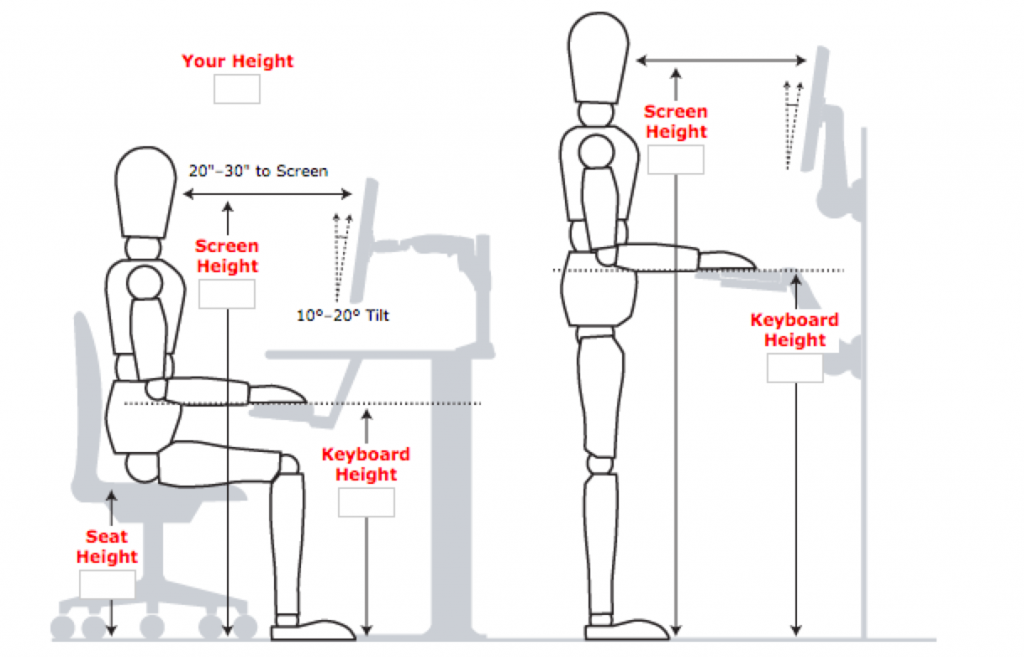Ergonomics
Ergonomics is the study of the kind of work you do, the environment you work in, and the tools you use to do your job. The goal of office ergonomics is to set up your office work space so that it fits you and the job you are doing. Office ergonomics can help you be more comfortable at work. It can help lower stress and injury caused by awkward positions and repetitive tasks. It focuses on how things are set up in your office work space, such as:
- Your workstation set-up, how you sit, and how long you stay in one position.
- How you do a certain task, the kinds of movements you make, and whether you make the same movements over and over.
- Your work area, including light, noise, and temperature.
- The tools you use to do your job and whether they are set up to fit your needs.
Getting Started
Initially take time to adjust your chair, keyboard tray, and monitor so your posture is aligned in a 90/90/90 position. When sitting at your work station, your knees, waist, and elbows should be at 90 degrees. When viewing computer monitor(s), your eyes should be level with the top 1/3 of your screen so your head and neck is not tilted up or down. The monitor should also be located at an arms reach away so you are not having to strain your eyes. Your feet should be flat on the floor. You can improve the ergonomics of your work space by ensuring the frequently-used office equipment (telephone, stapler, resource materials) is within easy reach. This page provides several resources to assist in adjusting your workstation. If you find you need extra assistance or an ergonomic evaluation, contact the EH&S Manager at mjones@plu.edu.
Correct Seated and Standing Workstation Position
- Total Body Stretches
- Upper Body
- Office Stretches



